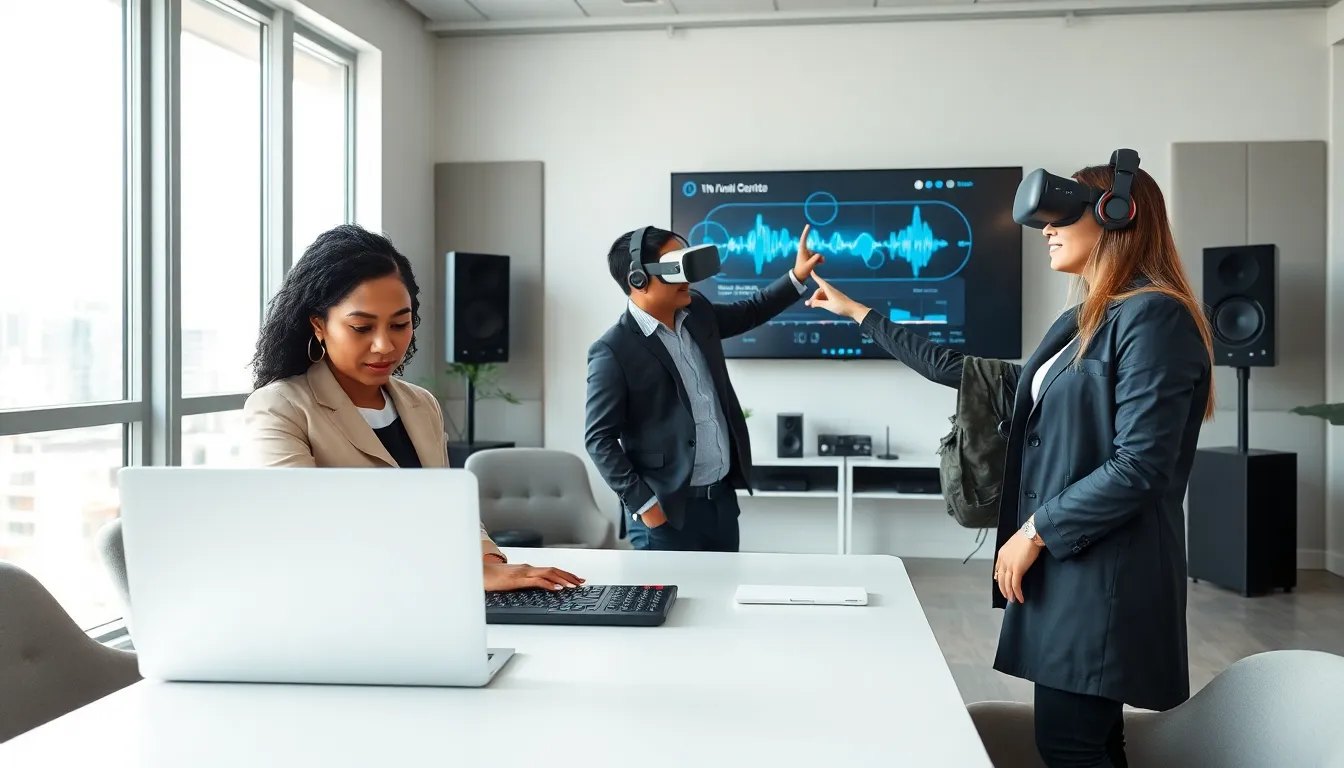Imagine strapping on your VR headset and being instantly transported to another world. Now, add a dash of responsiveness to that experience. How? Enter the VR soundboard, the unsung hero of immersive virtual environments. This nifty tool not only enhances your gaming and simulation experiences but also elevates your entertainment game to a whole new level. Curious about how this works and why it matters? Stick around, because we’re about to dive deep into the auditory universe of VR soundboards.
Table of Contents
ToggleWhat Is a VR Soundboard?

A VR soundboard is essentially a sophisticated audio tool designed to create, store, and manipulate sounds tailored for virtual reality environments. Think of it as your personal audio library, packed with sounds and audio effects that can be triggered in real time. Users can select from a variety of sound clips, everything from goofy cartoon noises to spine-chilling horror sound effects. While traditional soundboards have existed for a while, VR soundboards take it up a notch by seamlessly integrating these audio bits into immersive 3D spaces. They help construct a soundscape that reflects the virtual world around you, making every experience richer and more engaging.
How VR Soundboards Work
The mechanics behind VR soundboards are fascinating yet surprisingly straightforward. They operate on software designed to use spatial audio technology. Spatial audio allows sound to originate from different points in a three-dimensional space, mimicking how humans perceive sound naturally. When a user interacts with the VR environment, the soundboard can modify sound parameters based on the user’s actions and location, bringing realism to scenarios. For instance, stepping closer to a sound source will make it louder, while moving away diminishes the volume and alters its quality. Most VR soundboards feature user-friendly interfaces, ensuring even the tech-challenged can master their functionalities in no time.
Benefits of Using a VR Soundboard
The advantages of utilizing a VR soundboard extend beyond mere entertainment. For one, it significantly boosts immersion. Research shows that users experience heightened engagement in virtual worlds when rich soundscapes accompany visuals. Besides that, a good audio backdrop adds layers of narrative depth, informing users about their surroundings through auditory cues. Besides, they promote social interaction in multiplayer settings. With the ability to share sound effects and clips, VR soundboards enhance camaraderie among players, allowing them to communicate and joke in fun ways. Finally, they can serve educational purposes. Imagine students learning about ecosystems by hearing the authentic calls of wildlife in a virtual habitat. Such applications can make learning interactive and effective, enhancing retention.
Popular VR Soundboard Applications
Several applications stand out in the world of VR soundboards, each showcasing unique features. One notable example is “VRChat,” where users create their avatars and communicate using custom soundboards. Here, one can select and share an array of sounds, from memes to ambient music, enhancing the social experience. “Rec Room” is another gem, offering a platform for multiplayer games and creative expression. Users can set up soundboards for their rooms and games, making playtime even more enjoyable. On the flip side, applications like “AltspaceVR” focus on events and parties, utilizing soundboards to create dynamic atmospheres during gatherings. These platforms illustrate how soundboards can energize interactions in virtual environments.
Setting Up Your VR Soundboard
Getting your VR soundboard up and running might sound daunting, but it’s easier than you think. First, ensure your VR headset is compatible with soundboard applications. Most modern systems support this feature. The next step involves downloading the preferred soundboard application from your specific VR platform’s store. After installation, follow the on-screen instructions to create an account if needed. From there, users can explore sound libraries, select favorite audio tracks, and assign them to easy-access buttons. Many applications come with tutorials or community forums, making it easier to troubleshoot any issues that might arise during the setup. Also, don’t hesitate to experiment. Try different sounds to see how they transform your virtual space.
Tips for Maximizing Your VR Soundboard Experience
To truly enjoy all that a VR soundboard has to offer, consider these handy tips. First, customize your sound presets to suit different scenarios. For example, create a peaceful ambient background for exploration and transition to exciting sound effects when engaging in combat. Secondly, always test sound levels before diving into an experience. Adjusting volumes ensures that sound complements visual elements without overpowering them. Thirdly, explore community resources. Many users share sound packs or customizable templates that can enhance your library. Finally, engage with other users. Not only can you exchange sound effects, but sharing experiences can inspire new ways to use your soundboard effectively.




